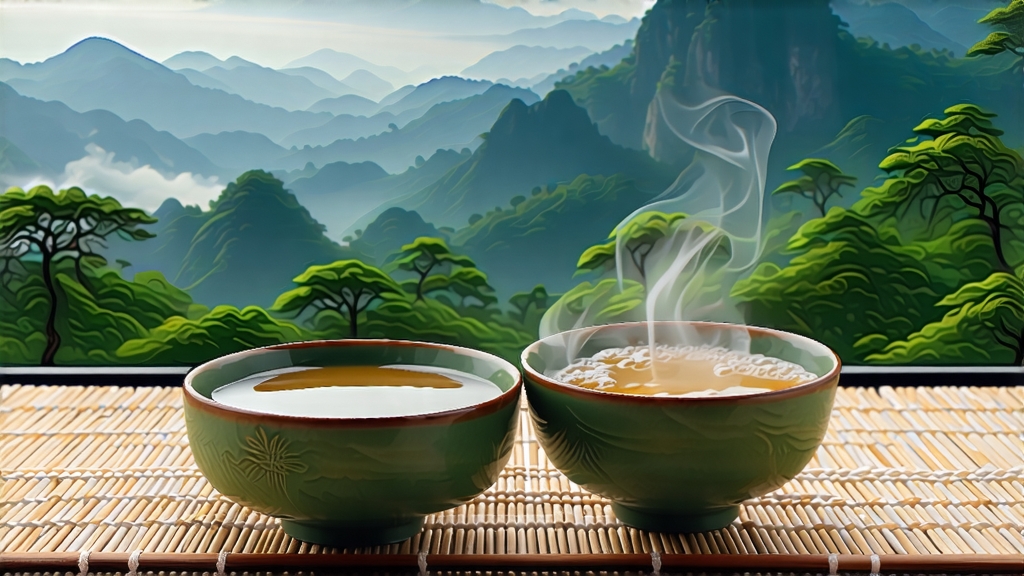
Alishan High-Mountain Oolong is the liquid echo of Taiwan’s central mountain range, a tea that carries the chill of 1,200-metre dawns and the perfume of evergreen forests inside every curled leaf. Though the cultivar itself—most often Qing Xin—has grown on the island for two centuries, the story of Alishan as a distinct tea appellation begins only in 1980, when government agronomists encouraged farmers above the cloud line to replace betel-nut terraces with tea gardens. Within a decade the gamble paid off: the cool nights, sharp diurnal swing and mineral-rich laterite soils produced leaves so fragrant that Taipei merchants coined the marketing term “high-mountain oolong” (gaoshan oolong) and Alishan became its flagship.
Botanically, Alishan is not a single tea but a seasonal triad. Spring plucking, from late March to early May, yields the most floral liquor, laced with lilac and white peach. Summer tea, picked in July before the typhoons, is fleshier, with muscat-grapiness that suits cold brewing. Winter harvest, mid-October to early November, is the most coveted: slow growth on the brink of frost concentrates amino acids, giving a creamy “milk note” that lingers like custard. A fourth, unofficial “light winter” picking in December is sometimes charcoal-roasted for the connoisseur market, producing a rarer amber style that tastes of roasted chestnut and pine sap.
The craft begins at 4 a.m. when pickers climb stone steps slick with dew, headlamps picking out the silver hairs on newly flushed tips. Only the top three leaves and the half-open bud are taken, collected in shallow bamboo baskets to prevent bruising. By 9 a.m. the harvest is already withering on cloth racks in a shaded shed; mountain breezes reduce moisture from 78 % to 68 % within two hours. The crucial “outdoor withering” is followed by indoor tossing in tumbling bamboo drums—fifteen rotations every hour for six hours—breaking cell walls to initiate oxidation. Masters judge readiness by nose: when the air smells of ripe honeydew and bruised orchid, oxidation is arrested at 25 %, halfway to black tea.
Next comes the “sha-qing” kill-green, a 280 °C tumble in an automated drum for just three minutes; enzymes are neutralised while leaves remain jade at the edges and emerald in the centre. Immediately the leaf is wrapped in giant white cloths and rolled under mechanical pressure into tight hemispheres. This dual action twists the leaf and squeezes out sap, coating the surface with aromatic oils that will later glisten in the cup. A second, lighter rolling follows, then drying at 120 °C until 4 % moisture remains. At this point the tea is maocha—raw, bright, but still unruly. The finishing touch is a low-temperature charcoal bake: longan-wood embers at 80 °C for six hours, repeated on three consecutive days. The slow bake polishes edges, marrying floral top notes with a toasted bass line that can survive multiple infusions.
To brew Alishan properly one needs a gaiwan, not a teapot; the flared rim allows aroma to leap out like steam from a forest hot-spring. Use 5 g of leaf for a 120 ml vessel, water just off the boil (95 °C) and a lightning-fast rinse to wake the pearls. The first real infusion is 45 seconds; liquor the colour of pale chardonnay releases scents of gardenia and starfruit. Pour with a dragon-like arc, aerating the stream so the fragrance condenses above the fairness pitcher. Second infusion drops to 25 seconds, revealing a thicker body, almost like whipped cream. By the fifth steep, stretch time to two minutes: the cup turns golden amber, taste shifting from white peach to roasted almond and, finally, to the mineral snap of wet granite. Good Alishan will yield eight infusions; great Alishan, twelve.
Tasting is done in three phases. First, the dry leaf: warm it in a porcelain aroma cup, cover for thirty seconds, then inhale sharply—notes of lily, vanilla and cool pine should rise. Second, the liquor: sip, hold for three heartbeats, then exhale through the nose. A cooling sensation at the back of the throat—what Taiwanese